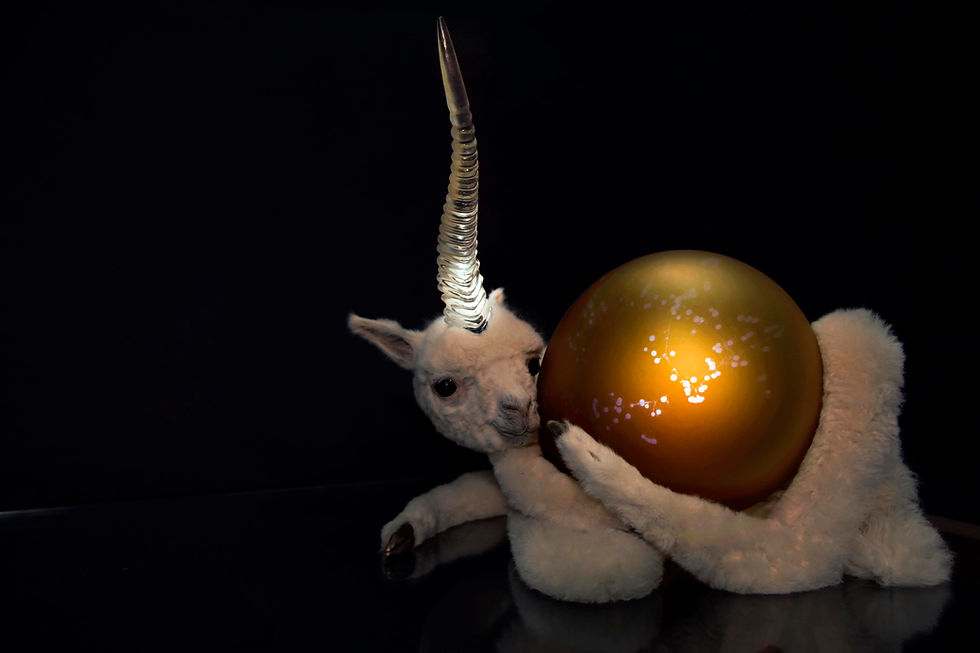Bio-Care, TINNED, Wasserman Projects, Detroit (US), May 31 – August 23, 2025
- koenvanmechelen
- 28 aug
- 3 minuten om te lezen
Bijgewerkt op: 29 aug
This summer, Wasserman Projects celebrates ten years of artistic innovation, collaboration, and community in Detroit’s Eastern Market with the landmark group exhibition TINNED. By revisiting previously exhibited artists, the space charts its own development through a consideration of the trajectories of artists, galleries, and other collaborators.
Marking a full decade since its founding exhibition in 2015, TINNED brings together over 60 artists who have previously exhibited at Wasserman Projects, each contributing one work that reflects their current practice. In revisiting these past collaborators, the show offers a dynamic reflection on the evolution of the artists, the gallery itself, and the broader cultural landscape of Detroit and beyond.
“Looking back at the past ten years, we have forged so many meaningful relationships and I feel fortunate to follow the careers of such talented artists. The excitement and energy will be contagious. This show is a great prompt to review our history and plan for the next ten years.”
— Alison Wong, Director and Curator

Bio-Care
Belgian artist Koen Vanmechelen returns to Wasserman Projects nearly a decade after presenting his Cosmopolitan Chicken Project in 2016. For TINNED, he contributes Bio-Care, a striking sculpture that bridges art and science.
The work presents a taxidermied llama* curled protectively around a fragile glass egg. This globe-like vessel embodies the vulnerability of life and symbolizes our collective future.
The sculpture itself draws your attention in through its stark contrasts: the warm, protective curve of the llama encircling the cool fragility of blown glass. The llama’s body, preserved with lifelike intensity, becomes both guardian and witness. The egg-shaped vessel it cradles – clear, translucent, yet impossibly delicate – appears suspended between endurance and collapse, resilience and vulnerability.
This juxtaposition of animal and object draws the viewer into a meditation on life’s precarious balance. Vanmechelen has long been intrigued by the llama for its strength and vitality, becomes a symbol of resilience. The glass egg, by contrast, holds the fragility of existence. Together, they form a single, inseparable organism: protector and future, nature and culture, matter and metaphor.
The artwork came to life through a collaboration of art and science. Placed within the context of scientific imaging and metabolic mapping, the sculpture transforms into a three-dimensional emblem of interconnectedness. The stillness of the taxidermied body resonates against the dynamic flux of the video projections, emphasizing the paradox of life: permanence and impermanence, stability and change.
“Why should we care? Because man is part of a planetary superorganism. He is bioculturally connected with all other species, some of which can be of vital importance for our survival. Like the llama, curled around a glass egg, globe of our collective future. That’s why…”
— Koen Vanmechelen
Bio-Care emerged from a collaboration with scientist Prof. Durant at the intersection of art and science. His research explores the complex relationships between thousands of metabolites – the fundamental building blocks of life, conserved from the smallest organisms to humans. Metabolite levels and their interconnectedness reflect both genetic heritage and environmental influences. Studying these patterns offers insights into maintaining health, preventing illness, and treating disease.
The team performed untargeted metabolomic profiling on plasma from a rooster, hen, chick, llama, and Vanmechelen himself. Using liquid chromatography paired with mass spectrometry, Prof. Durant quantified nearly 5,000 metabolites in each sample. Visualization software (Metscape 2) then mapped these metabolites onto known metabolic pathways, highlighting differences between species. Color-coded animations created with open-source tools transformed these maps into dynamic moving images, further emphasizing the universality – and fragility – of life.
Wasserman Projects
Founded by Gary Wasserman in 2015, Wasserman Projects was conceived as an alternative to a conventional commercial art space. Inspired by the kunsthalle model, the gallery maintains a nimble approach that bridges museum and gallery practices. As a Detroit native, Wasserman wanted to bring the art he encountered around the world into meaningful dialogue with his home city. Today, the space continues to incubate ambitious, cross-disciplinary projects that demand close collaboration between artists, organizers, funders, and fabricators.
Exhibition facts
Wasserman Projects
3434 Russell Street, #502
Detroit, Michigan 48207, US
Hours
Wednesday – Saturday, 12 – 5pm
*Note: All taxidermied animals used in Vanmechelen’s work have died a natural death.

